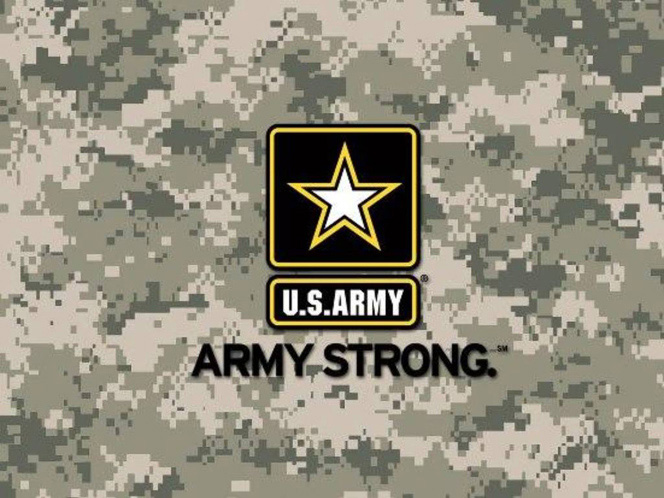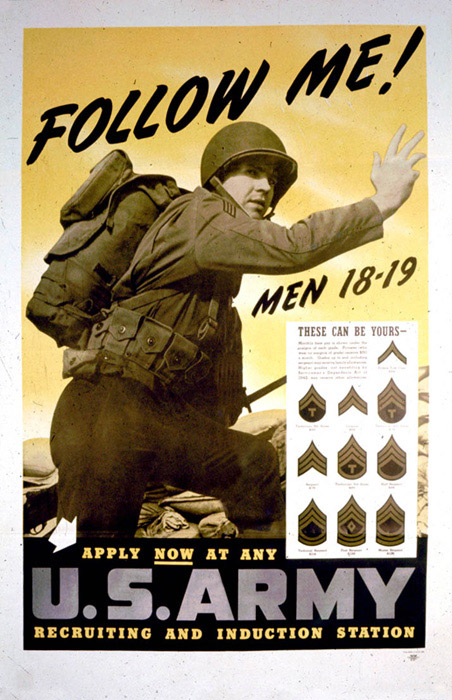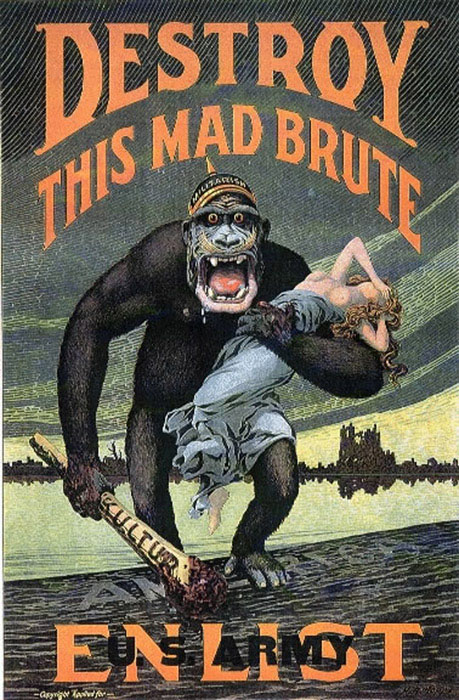

 | Uncle Sam's famous "I Want You" poster is one of the most iconic in United States military imagery. Painted in 1917, the poster is unique due to the seemingly timeless value of Mr. Uncle Sam. Despite the outdated-ness of his appearance, Uncle Sam seems to emit a kind of ultimate form of an elder-figure. His stern look, posture and even clothing suggest that he is a gravely important figure who should be listened to. The placement of Sam in the image is very important to the message he is attempting to get across. He is looking the viewer dead in the eyes; his posture suggests a kind of seriousness to the matter. He points straight out, directly involving the viewer into the discourse. Despite his blunt and abrasive placement in the image, he is also drawn to be open with the viewer. Also the name, "Uncle Sam" denotes a kind of relationship with the viewer even if there is not one. The use of a familial term as a kind of intertextual addition to the poster is an important way of interpellating the audience. Below Uncle Sam is the anchorage and mortise, "I Want You for U.S. Army". And subsequently the text asks the viewer to enlist at the nearest recruiting station. |
| This second army image is a 1942 World War II recruitment poster. This image immediately interpellates the viewer with the vision of a glorified soldier figure, motioning others to follow him. The anchorage to the right of the soldier specifically calls to, "Men 18 - 19"; thus explicitly requesting the attention of their target audience. This anchorage serves as an interesting artifact in dating the image as well. The era in which this poster was released had different views on feminism and equality of gender, especially in the military, therefore it was acceptable. Under the anchorage, the ad presents a set of military ranks. These are used almost as a baiting device, enticing young men to join in order to earn these different ranks, which to men of that age are somewhat comparable to awards given in high school. At the bottom of the image is the mortise and the urge for the target viewer to join the U.S. Army "Now." |  |
 |
"Destroy This Mad Brute" was originally used in Britain as World War I propaganda, but was later used by the United States in the same employ in 1917. The poster is almost entirely composed of political symbolism. The most interpellative image in the text is the snarling figure of the ape. This image is set strongly within the political climate at the time. The fact that the ape has a traditional German helmet and German style moustache is a direct objective correlate to Germany as the antagonist within the text. On the ape's helmet is the word militarism, and the club he wields is inscribed with "Kultur", or "culture" in German. This is an explicit statement that the war is both ideological as well as grounded in anti-militarism sentiment. The ape is also holding a half naked woman, which would likely represent some form of despicable crime which it has committed (i.e. rape or kidnapping). This is meant to incite the viewer against the already antagonistic representative of Germany, as well as to protect American women, which are depicted as the weaker, fairer sex. Upon further analysis, the ape is walking onto a shore marked "America", which would likely lead the viewer to feel as though the German force is actually invading American soil, although such events never happened. Finally, at the bottom of the image is the mortise, "Enlist, U.S. Army." |
The American use of this ad served several purposes. As I said, the original version of this poster
was used in Britain, however the U.S. adopted it as their own. This helped the U.S. by
allowing them to seem more like the other Allied powers during the World War I era. Sproule describes
this process as being the "challenge required by the United states to convince Allied peoples and
their governments that American aims were the same as their own." (Sproule 210)
| Previous | Home | Next |